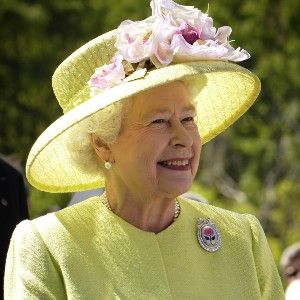Quick Links
Queen Elizabeth II of the United Kingdom has a personal net worth of $500 million. The queen's wealth comes from property holdings, including Balmoral Castle in the Scottish Highlands, stud farms, a fruit farm, and marine land throughout the U.K.; extensive art and fine jewelry; and one of the world’s largest stamp collections built by her grandfather. Not included are those assets belonging to the Crown Estate, estimated to be worth $28 billion and held in trust which she gets to enjoy as Queen, such as $10 billion worth of real estate, Buckingham Palace (estimated to be worth another $5 billion), and the Royal Art collection.
The Royal Collection is the royal family's art collection, containing over 7,000 paintings, 40,000 watercolors and drawings, and 150,000 old master prints, as well as numerous artifacts, rare books, and the Crown Jewels, which are kept in the Tower of London.
The Queen also receives an annual government payment called the Sovereign Grant. Since 2011 the amount she receives is based on the Government's revenue from the Crown Estate. Initially set at 15% of the estate's earnings, it was increased in 2016 to 25% in order to fund renovations and repair work on Buckingham Palace.
The Ducky of Lancaster is a Crown entity made up of land and assets that exist to produce an income for the British Sovereign. It's held in perpetual trust for future kings and queens of the United Kingdom, and every year the profits from the Duchy are presented to Queen Elizabeth and form part of The Privy Purse, which is intended to fund both the official and private expenses of the monarch.
Like most businesses, the pandemic of 2020-2021 has taken its toll on royal finances. In September 2020 the Keeper of the Privy Purse announced a potential $45 million shortfall on the royal balance sheet, owing to the dramatic reduction in tourism and visits to royal landmarks. He confirmed that the royals would not be asking for more funding from British taxpayers to make up the shortfall.
Born Elizabeth Alexandra Mary Windsor in Mayfair, London, she was the eldest child of the Duke and Duchess of York - later King George VI and Queen Elizabeth. She had one sister, Princess Margaret who passed away in 2002. When she was born, Elizabeth was third in line for the throne and was not expected to become queen at all. But when her uncle, King Edward VIII, abdicated the throne in 1936 her father became king, and she became the heir presumptive.
She married Philip, Duke of Edinburgh - a former prince of Greece and Denmark - in 1947 and they have four children together: Charles, Prince of Wales; Anne, Princess Royal; Prince Andrew, Duke of York; and Prince Edward, Earl of Wessex. Upon her father's death in February 1952, Elizabeth became queen and her coronation took place in June 1953.
Out of her considerable income, Queen Elizabeth pays her youngest three children for their royal duties. Prince Charles receives his own salary from the Duchy of Cornwall. She also pays her palace staff of about 1,200 people, who threatened to go on strike over pay in 2015.
The Queen famously doesn't carry cash, and when she attends church each Sunday she reportedly brings a banknote ironed into a square to donate. She's known to be very frugal, having used the same $10 brand of nail polish for the past 30 years. Her one big expense is her horses, which reportedly cost around $800,000.
The Crown Estate has legal tax-exempt status and Queen Elizabeth has no legal liability to pay income tax, capital gains tax, or inheritance tax under UK Parliamentary rules. It is understood that Queen Elizabeth makes voluntary payments to HM Revenue and Customs, but details of these payments are kept strictly private.
A personal investment portfolio also provides Queen Elizabeth with a private income. in 1971 the director of her bank, Coutts, estimated her wealth to be $2.7 million (around $38 million today), and she was number one in the inaugural Sunday Times Rich List in 1989, making her the richest person in Great Britain. In 2002 she inherited her mother's estate, thought to have been worth $96 million, and in 2012 she received a Guinness World Record as Wealthiest Queen.
Sources: Wikipedia, Forbes, Cheat Sheet, Standard
This article was updated on April 7, 2021 by Poppy O'Neill
Earnings & Financial Data
|
Date |
Category |
Description |
Amount |
|---|---|---|---|
|
2019 |
Salary |
Sovereign Grant |
$60,000,000 |
|
2018 |
Salary |
Sovereign Grant |
$105,000,000 |
|
2015 |
Salary |
Duchy of Lancaster |
$22,000,000 |
|
2015 |
Salary |
Sovereign Grant |
$51,000,000 |
|
2014 |
Salary |
Sovereign Grant |
$49,000,000 |
|
2013 |
Salary |
Sovereign Grant |
$42,000,000 |
|
2012 |
Earnings |
Estate earnings |
$387,000,000 |
|
2012 |
Asset |
Estimated value of her main residence |
$5,000,000 |
|
2011 |
Royalties |
Annual earnings of the Crown Estate |
$403,000,000 |
|
2011 |
Royalties |
Annual grant from the Crown Estate profit |
$57,600,000 |
|
2011 |
Contract |
Pay given to Queen Elizabeth which is used to carry out her official duties |
$36,100,000 |
|
1991 |
Royalties |
The Duchy of Lancaster generates $25 million income for the queen every year |
$25,000,000 |


